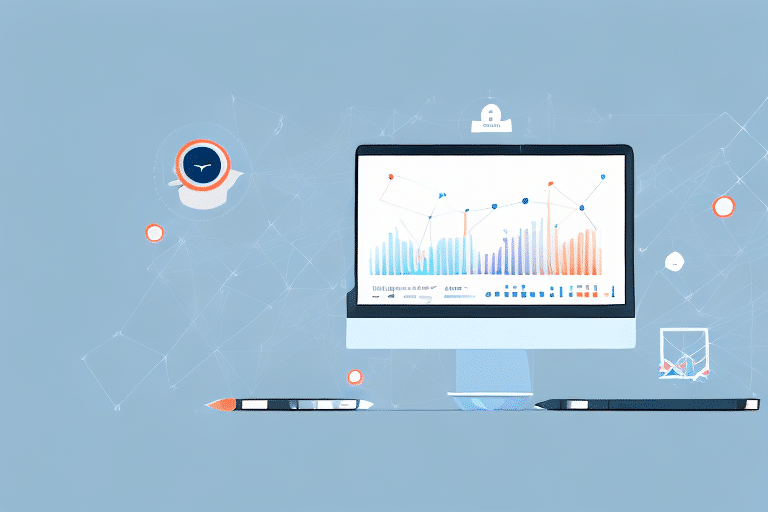Enhancing Operational Efficiency Through Data Science
In today's competitive business landscape, achieving operational efficiency is paramount. Companies are increasingly leveraging data science to optimize their operations, reduce costs, and enhance decision-making. Data science involves the analysis of large datasets to uncover patterns, generate insights, and build predictive models that drive business success. This article delves into the significance of operational efficiency, the role of data science and analytics, real-world case studies, key performance indicators (KPIs), implementation strategies, benefits and challenges, essential tools and technologies, and the future outlook with predictive analytics and artificial intelligence (AI).
The Significance of Operational Efficiency in Modern Business
Operational efficiency refers to the ability of a company to deliver high-quality products or services while minimizing costs and reducing waste. Achieving operational efficiency leads to:
- Cost Reduction: Lower production and operational costs increase profitability.
- Increased Productivity: Streamlined processes enhance employee productivity and output.
- Enhanced Customer Satisfaction: Efficient operations ensure timely delivery and high-quality products, fostering customer loyalty.
- Competitive Advantage: Companies can offer better prices and adapt quickly to market changes.
According to a McKinsey report, companies that improve their operational efficiency can see a significant boost in their profitability and market share.
Understanding Data Science and Its Impact on Efficiency
Data science integrates advanced statistical techniques, machine learning, and computer science to extract meaningful insights from vast amounts of data. Its impact on operational efficiency includes:
- Process Optimization: Identifying bottlenecks and streamlining workflows.
- Predictive Maintenance: Anticipating equipment failures to reduce downtime.
- Inventory Management: Optimizing stock levels to meet demand without overstocking.
- Enhanced Decision-Making: Using data-driven insights to inform strategic choices.
Businesses utilizing data science have reported up to a 10-20% improvement in operational efficiency, as highlighted in a Forbes article.
The Role of Data Analytics in Driving Operational Efficiency
Data analytics, a subset of data science, focuses on examining raw data to draw actionable insights. Its role in operational efficiency encompasses:
- Performance Monitoring: Tracking key metrics in real-time to identify issues promptly.
- Trend Analysis: Understanding market and operational trends to make informed decisions.
- Resource Allocation: Efficiently distributing resources based on analytical insights.
Real-time analytics enable businesses to respond swiftly to operational challenges, reducing downtime and enhancing overall productivity. For instance, IBM Analytics provides tools that help businesses monitor and optimize their operations effectively.
Case Studies: Successful Implementation of Data Science for Efficiency
Several leading companies have successfully integrated data science to bolster their operational efficiency:
- Google: Utilizes machine learning algorithms to optimize data center energy consumption, resulting in significant cost savings.
- UPS: Implements predictive analytics to optimize delivery routes, reducing fuel consumption and improving delivery times.
- Netflix: Employs data analytics to personalize content recommendations, enhancing user engagement and retention.
- Siemens: Uses predictive maintenance to monitor industrial machinery, preventing unexpected downtimes.
In the healthcare sector, companies like SEER apply data science to improve patient outcomes by predicting hospital readmissions and optimizing treatment plans.
Key Performance Indicators (KPIs) for Measuring Operational Efficiency
To effectively measure and improve operational efficiency, businesses should focus on the following KPIs:
- Cycle Time: The total time from the beginning to the end of a process.
- Inventory Turnover Rate: Measures how often inventory is sold and replaced over a period.
- Capacity Utilization: The extent to which a company uses its production capacity.
- On-Time Delivery Rate: Percentage of deliveries made on or before the scheduled time.
- Defect Rate: The percentage of products or services that fail to meet quality standards.
- Employee Productivity: Metrics such as output per employee or revenue per employee.
Regularly tracking these KPIs allows businesses to identify inefficiencies and implement targeted improvements.
Implementing a Data-Driven Strategy for Enhanced Efficiency
Adopting a data-driven approach involves several critical steps:
- Data Collection: Gathering relevant data from various sources, including internal systems and external databases.
- Data Storage and Management: Utilizing robust systems like Microsoft Azure Storage or Amazon S3 for efficient data storage.
- Data Analysis: Employing tools such as Tableau or Power BI to analyze and visualize data.
- Predictive Modeling: Using machine learning frameworks like TensorFlow or PyTorch to build predictive models.
- Decision-Making: Integrating insights into strategic decisions and operational processes.
Successful implementation also requires a cultural shift within the organization, emphasizing the importance of data literacy and fostering a data-centric mindset among employees.
Benefits and Challenges of Leveraging Data Science for Efficiency
Adopting data science for operational efficiency offers numerous benefits, including:
- Enhanced Decision-Making: Data-driven insights lead to more informed and effective decisions.
- Cost Savings: Optimization of resources and reduction of waste result in significant cost reductions.
- Improved Agility: Ability to quickly respond to market changes and operational challenges.
- Competitive Edge: Leveraging advanced analytics provides a strategic advantage over competitors.
However, organizations may face challenges such as:
- High Initial Investment: Significant costs associated with technology acquisition and talent hiring.
- Data Privacy and Security: Ensuring the protection of sensitive data requires robust security measures.
- Integration with Existing Systems: Seamlessly integrating new data science tools with legacy systems can be complex.
- Skill Gap: Shortage of skilled data scientists and analysts to interpret and manage data effectively.
Addressing these challenges is crucial for maximizing the benefits of data science initiatives.
Essential Tools and Technologies for Data-Driven Efficiency
Several tools and technologies are pivotal in harnessing data science for operational efficiency:
- Data Storage and Management: Platforms like Hadoop and Apache Spark facilitate the handling of large datasets.
- Data Analytics and Visualization: Tools such as Tableau, Power BI, and Qlik Sense help in analyzing and visualizing data.
- Machine Learning Platforms: Frameworks like TensorFlow and PyTorch are essential for building predictive models.
- Cloud Services: Providers such as Amazon Web Services, Microsoft Azure, and Google Cloud offer scalable solutions for data storage, processing, and analytics.
Integrating these tools effectively requires a skilled workforce proficient in data analysis, programming, and statistical methods.
The Future of Operational Efficiency: Predictive Analytics and Artificial Intelligence
The integration of predictive analytics and AI is set to revolutionize operational efficiency:
- Predictive Maintenance: Forecasting equipment failures to perform maintenance proactively, minimizing downtime.
- Advanced Automation: AI-driven automation of complex tasks enhances productivity and reduces human error.
- Enhanced Personalization: Tailoring products and services to individual customer preferences through AI insights.
- Supply Chain Optimization: AI algorithms optimize supply chain logistics, ensuring timely deliveries and cost-effectiveness.
According to a Forrester report, businesses that adopt AI and predictive analytics can achieve up to a 30% improvement in operational efficiency within the next five years.
In conclusion, data science provides a robust framework for enhancing operational efficiency. By leveraging data-driven insights, businesses can optimize their processes, reduce costs, and maintain a competitive edge in the market. While challenges exist, the benefits of adopting data science are substantial, making it an indispensable tool for modern enterprises.






















